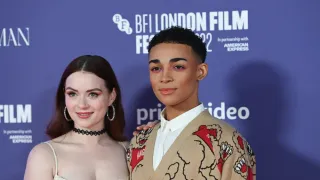
4 hours ago
When Queer Muslim Magic Meets the Movies: “The Queen of My Dreams”
READ TIME: 3 MIN.
In a cinematic landscape where queer Muslim stories are often relegated to the margins or painted in somber tones, "The Queen of My Dreams" emerges as a vibrant exception. Director Fawzia Mirza and lead actor Amrit Kaur have crafted a film that refuses to dwell in tragedy, instead celebrating the joy, complexity, and resilience of queer Muslim identity .
The film follows Azra, a queer Pakistani-Canadian grad student played by Kaur, who returns to Pakistan after the sudden death of her father. This loss propels Azra into a journey through her family’s past, traversing between present-day Nova Scotia and 1960s Karachi. The story, inspired by Mirza’s own theatrical work and earlier short film, becomes a tapestry of memory, culture, and self-discovery .
Mirza, an out queer Muslim filmmaker, has spoken publicly about her intention to center “the often-overlooked joy of queer Muslim life.” In a recent interview, Mirza emphasized that at a time when diversity, equity, and inclusion initiatives are facing backlash and Islamophobia remains a lived reality for many, telling stories of love and happiness is both radical and necessary . “Joy is the ultimate act of revolution,” Mirza asserts, highlighting how the film’s exuberant dance numbers and moments of levity serve not just as artistic choices but as political statements .
Kaur, who delivers a double performance as both Azra and her mother Mariam, echoes this sentiment: “It’s so important for people to see themselves reflected in stories that are about laughter, love, and family—not just hardship. That’s the reality for so many of us, even if it’s rarely shown on screen” .
The intergenerational dynamic at the heart of "The Queen of My Dreams" is central to its emotional resonance. By moving seamlessly between decades and continents, the film explores the persisting influence of family expectations and the universal longing for acceptance. Azra’s journey is mirrored by flashbacks to her mother’s youth in 1960s Pakistan, drawing parallels between their struggles for independence and self-definition .
While much of queer media focuses on the pain of coming out, Mirza and Kaur intentionally foreground the moments of connection and hope: from Azra’s childhood realizations in Nova Scotia to the Bollywood-inspired musical numbers that punctuate the film’s narrative .
"The Queen of My Dreams" debuted to acclaim at the 2023 Toronto International Film Festival and has since collected several honors, including Canadian Screen Award wins for Best Lead Performance and Best Original Song . Its release on digital platforms this June has been met with enthusiastic responses from audiences craving more nuanced and joyful representations of queer and Muslim lives .
For many viewers, the film’s arrival feels especially timely. As political and social climates grow more polarized, "The Queen of My Dreams" offers a narrative that affirms the multifaceted reality of LGBTQ+ Muslims—one that is neither defined by victimhood nor erases the complexities of tradition, faith, and family .
Both Mirza and Kaur have spoken about the collaborative environment that shaped the film. “Telling this story with a team that understood its personal and political stakes made all the difference,” Mirza notes, crediting the cast and crew’s shared commitment to authenticity and joy .
Off-screen, the film’s impact is also being felt through community screenings and conversations, sparking dialogue around representation and the diversity of Muslim and South Asian experiences in the LGBTQ+ community .
As audiences continue to discover "The Queen of My Dreams", Mirza and Kaur hope the film will inspire more creators to tell stories that reflect the full spectrum of queer life. “We want people to know there’s space for joy, for love, and for all of us,” says Kaur. In a world urgently in need of hope and connection, their message has never felt more vital .






